Catherine Lord
- Artist Catherine Lord
- Lord's Art
- Contributor Emily Kunstler
Catherine Lord Biography
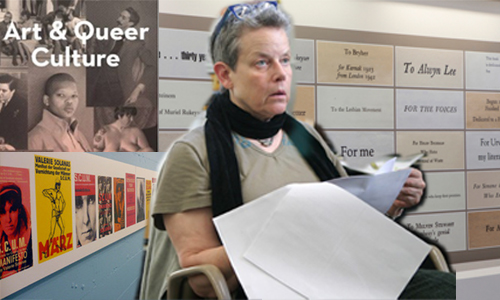
Catherine Lord is a professor of Studio Art at the University of California, Irvine, concentrating on queer theory, feminism, and photography. Lord is a writer, artist, and curator. She received her MFA from the State University of New York at Buffalo, through the Visual Studies Workshop. Lord was born in Dominica, a Caribbean nation, and lived in Barbados before moving to the United States at age 13. Lord’s work addresses feminism, cultural politics, and colonialism. Lord works with visual artwork, photography in particular, text, and curating. Lord’s curating work has been noteworthy and includes the exhibits “Pervert,” “Trash” and “Gender, Fucked.”
Lord is also well known for her lectures and writing. Her published works include The Summer of her Baldness: A Cancer Improvisation, Sa Calvitie, Son Colibri: Miss Translation, and, the soon to be released, Art and Queer Culture. Lord’s critical essays have been widely published. Lord’s artistic work has been shown at the New York Gay and Lesbian Film Festival, La Mama, Site Santa Fe, DNJ and Thomas Jancar, Post Gallery, the Los Angeles Gay and Lesbian Center, and Manifesta. Lord is currently working on a project titled The Effect of Tropical Light on White Men and recently exhibited “To Whom It May Concern.” In 2010, Lord was awarded the Harvard Arts Medal, becoming the first visual artist to receive it. Lord has spoken about art and feminism at several conferences and on panels across the United States.
I became interested with Lord’s work because of my own identity as a queer feminist with a background in art history and LGBT Studies. Lord’s dedication to queer theory, feminism, and colonialism from an artist’s perspective has created some fascinating series. I am looking forward to Lord’s upcoming book with Richard Meyer, Art and Queer Culture, as few art history works concentrate on queer subjects.
Source:
1. “Catherine Lord.” Department of Art. <http://studioart.arts.uci.edu/faculty/resident-faculty/catherinelord.html>.
Catherine Lord's Art
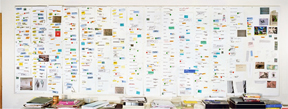
Commonplace
Catherine Lord's piece Commonplace (2008) from her series, The Effect of Tropical Light on White Men was used as part of Art for Obama, an online art auction supporting President Barack Obama. Lord is from the Caribbean; she was born on the island of Dominica and lived in Barbados until a teenager. The history of colonization on the island of Dominica, which became an independent nation in 1978, is interesting in light of Lord’s recent project. The Effect of Tropical Light on White Men is considered a memoir and a museum, examining issues of race and colonialism through an unconventional style of images and texts. It works as a memoir for Lord, as the artist, through her time in the Caribbean, and as a museum of the artifacts and writings of those who came before her.
I found this piece particularly fascinating within a feminist critique of colonialism. Lord’s unconventional approach and mixed media, further queers the critique. Lord skillfully uses many parts in creating a single piece. Although it is not possible to read the text in this photograph of Commonplace, reviews of the work reveal that the text and images are, in part, produced by white European colonizers, which Lord has appropriated for use in her series. Commonplace, with its many parts, works cohesively in creating an alternative history of colonialism.
Sources:
1. Lavoie, Amy. “Catherine Lord ’70 Receives Harvard Arts Medal.” Harvard Alumni. 3 May 2010. <http://alumni.harvard.edu/stories/catherine-lord-70-recieves-harvard-arts-medal>.
2. “Catherine Lord: The Effect of Tropical Light on White Men.” Creative Capital. 2012. <http://creative-capital.org/projects/view/174>.
3. “Lord.” Art for Obama. <http://www.artforobama.net/artistPages/lord.html>.
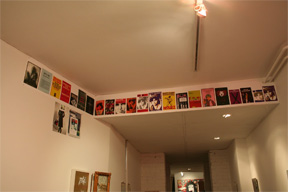
"Global Feminism"
In researching work by Catherine Lord, I came across “Global Feminism” (2011). As part of the show Readykeulous: The Hurtful Healer (The Correspondence Issue) organized by Ridykelous, Lord’s work is functioning in the effort to bring queerness and feminism into the mainstream. “Global Feminism” is an interesting piece that uses covers of Valerie Solanas’ S.C.U.M. Manifesto. The covers are of the international editions of the book, an interesting choice by Lord, which makes the exhibit more inclusive of how feminism operates around the world.
S.C.U.M. is a fascinating work by Solanas, self-published for the first time in 1967, which lists all the grievances Solanas has against men, along with an introduction and conclusion. S.C.U.M. is a work born of rage against capitalism and the patriarchal system. Highly criticized and acclaimed, it is fascinating to place Solanas’ book in context with her assassination attempt of Andy Warhol in 1968.
Lord’s use of a radical feminist’s book covers places the show, with its work towards bringing queerness and feminism into the consciousness of the mainstream, in a remarkable contradiction. The covers themselves are an intriguing mixture, some of which appear to feature Solanas, with others featuring scissors or weapons, referring to the idea that S.C.U.M. was meant to stand for “Society for Cutting Up Men,” despite the lack of a reference to this in the text itself. Placed between the two rooms of the gallery, Lord’s addition to the show demonstrates how vital radical feminism is to mainstream feminism and how the ideas of radical feminists should not be ignored or dismissed.
Sources:
1. “Readykeulous.” Invisible Exports. 2011. <http://www.invisible-exports.com/ exhibitions/24_readykeulous/readykeulous.html>.
2. Wetzler, Rachel. “Angry Art Letters on the Lower East Side.” Hyperallergic. 3 Feb.2011. <http://hyperallergic.com/17693/angry-letters-exhibition/>.
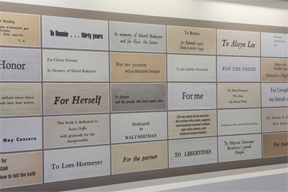
To Whom It May Concern
Lord’s recent exhibit at the ONE National Gay & Lesbian Archives in Los Angeles is titled To Whom It May Concern. Part of ONE’s series, Cruising the Archive: Queer Art and Culture in Los Angeles, 1945-1980, the photography exhibit highlights book dedications. The exhibit is an entire series of photographs of book dedications encircling the ONE library archives from which Lord culled the dedications. Lord made an interesting choice to not credit the books from which the dedications were chosen. Lord’s choice means that it will be nearly impossible to find a specific, individual dedication again, except by chance. The dedications range from initials to famous names, including Gloria Steinem, Walt Whitman, and The Lesbian Movement. This work was created using a series of several hundred photographs and was a laborious piece of work to create.
I find it a fascinating collection of the people queers choose to dedicate their work to. The dedications “For Herself” and “For me” stood out as a very queer way of making a book dedication. The entire exhibition captures an often-ignored piece of queer culture, the people who made queer books possible through their historical significance, support, love, and moments together. Lord’s commitment to book dedications displays a queer mode of thinking about the important aspects of books.
Source:
1. “To Whom It May Concern.” Cruising the Archive.2011. <http://cruisingthearchive.org/towhomitmayconcern/>.
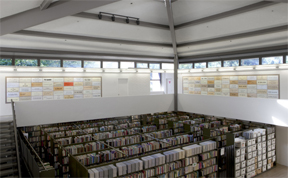
Emily Kunstler Autobiography
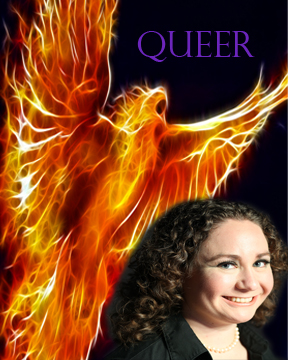
My name is Emily Kunstler and I am a senior at UCLA, majoring in Gender Studies with a LGBT Studies minor. My studies have concentrated on queer history and law. I am a sister of Gamma Rho Lambda, Zeta Chapter, which is a LGBTQQIAA sorority, and a member of Transgender UCLA Pride. I currently work at the Undergraduate Writing Center. After graduating in 2013, I plan on attending law school.
I have always loved art and choose to take the course "Queer Arts in Los Angeles" as it combined a passion of mine with my area of study. I have previously taken three Art History classes studying American Art, Art Appreciation (art from around the world), and African Art. My LGBT Studies classes have included an introductory course, two feminist and queer law courses, a course on homosexualities, a queer theory course, a queer literature course, and a queer of color critique course.


